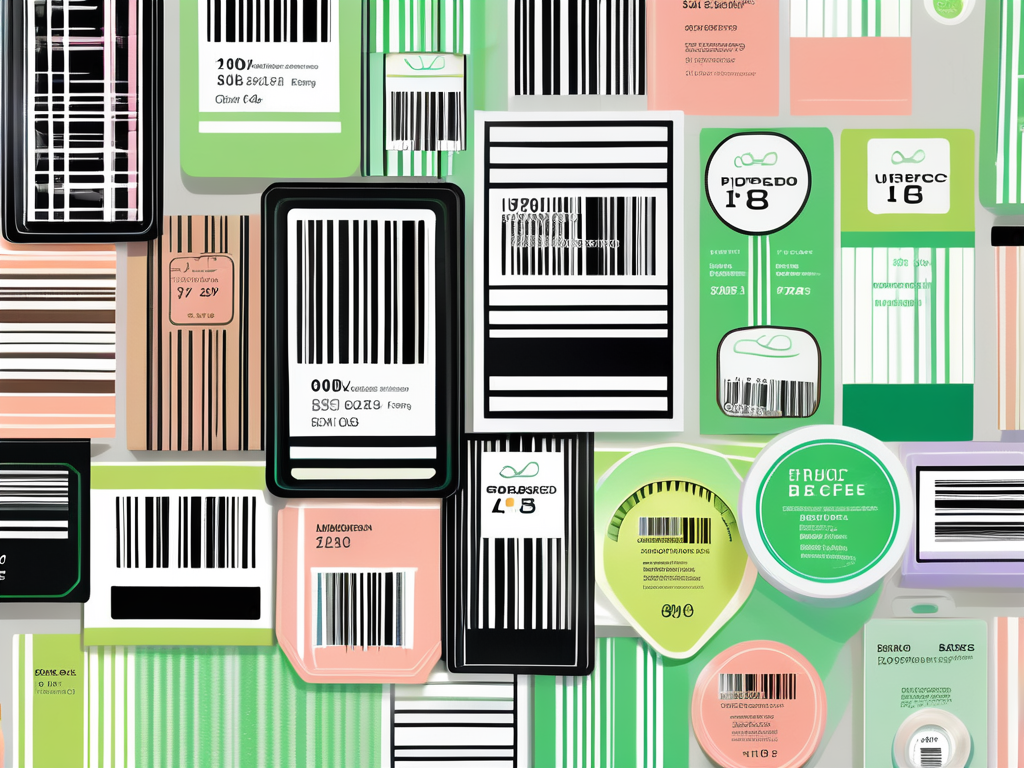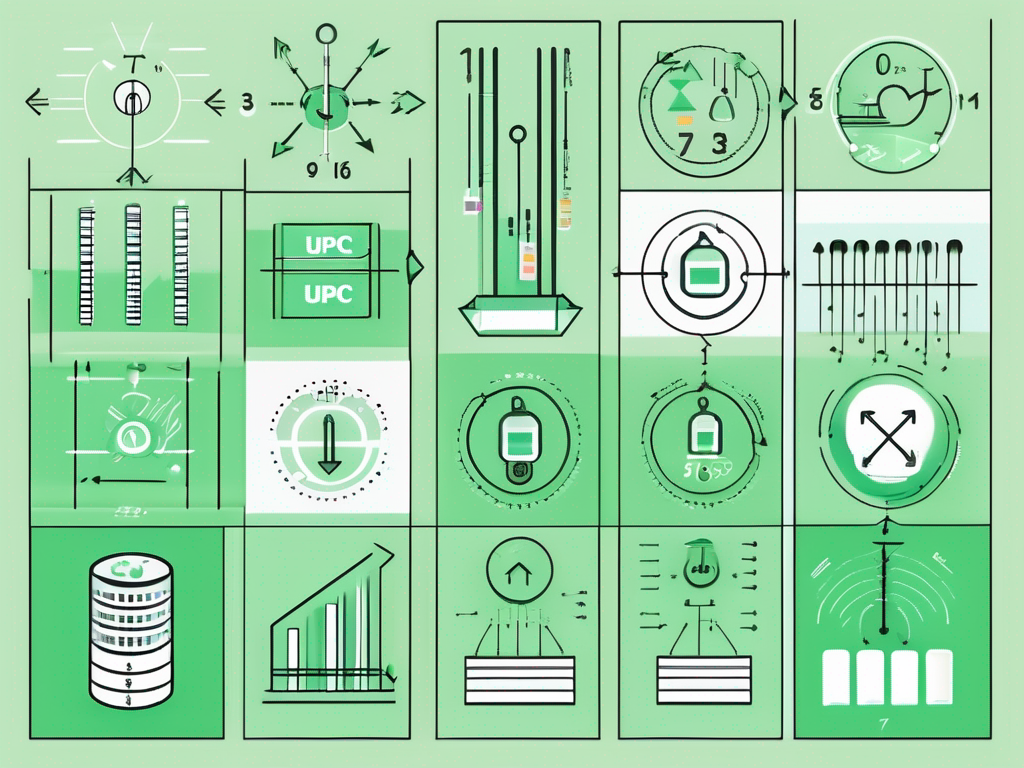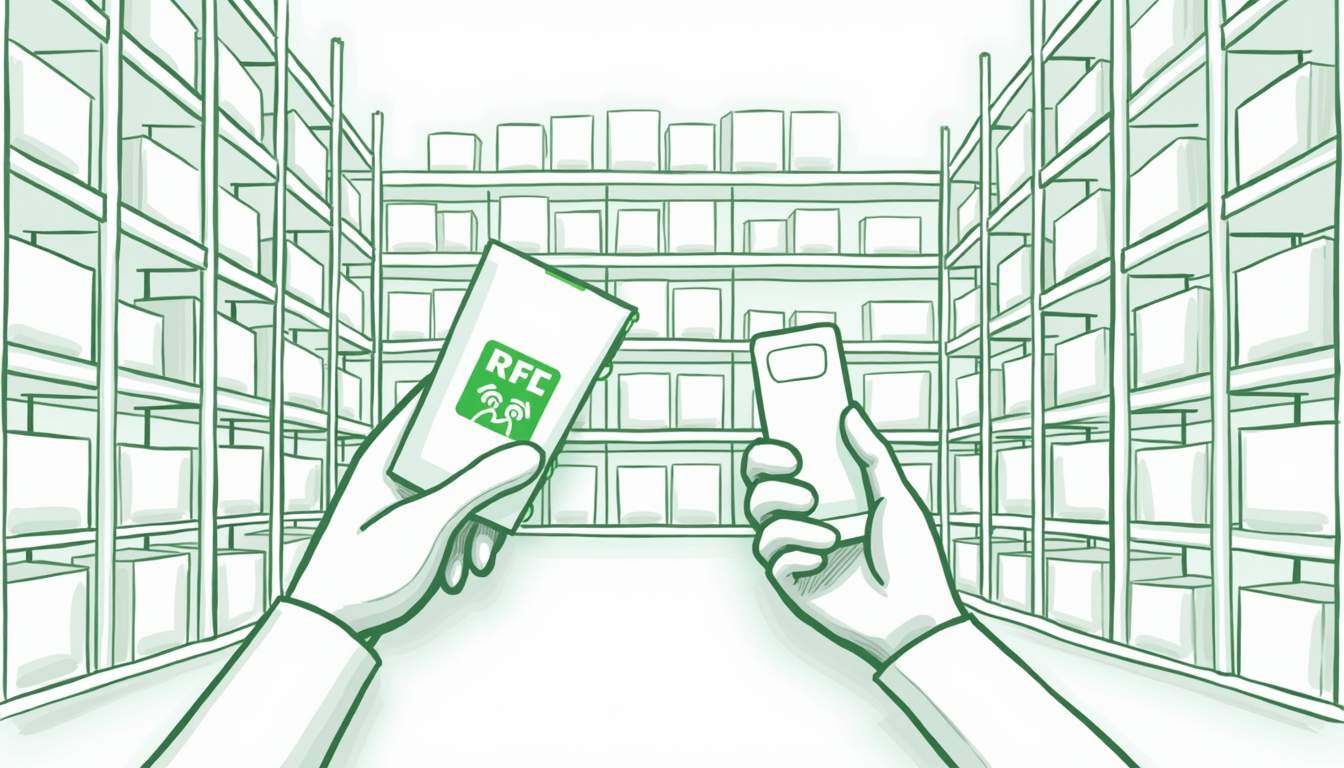Share this
Product UPC Barcode: What It Is and Why It Matters In Ecommerce
by Shipfusion Team on Jan. 14, 2025

Product UPC barcodes play a vital role in the retail industry, serving as an essential tool for tracking inventory, speeding up transactions, and providing detailed product information. This guide will explore the fundamentals behind UPC barcodes, their creation process, how they are read, common challenges faced, and future trends that are shaping their use.
The Basics of Product UPC Barcodes
At the core of retail and inventory management, UPC (Universal Product Code) barcodes serve as a standardized method for identifying products. UPCs are a series of numerical digits represented in a parallel line format, allowing for easy recognition and scanning.
What is a UPC Barcode?
A UPC barcode consists of 12 numerical digits encoded into a machine-readable format. The first six digits represent the manufacturer's identification number, known as the company prefix, followed by five product identification digits, and a final digit that serves as a check digit to validate the code's accuracy.
These barcodes are predominantly found on products sold in grocery stores, retail shops, and warehouses, making it easy for retailers to manage stock levels and facilitate quick transactions. The widespread use of UPCs has led to a significant reduction in checkout times, enhancing the overall shopping experience for consumers. As technology advances, the integration of UPCs with mobile payment systems and e-commerce platforms continues to evolve, further streamlining retail operations.
The Importance of UPC Barcodes In Ecommerce
UPC barcodes streamline the entire ecommerce fulfillment process. Scanning products saves both time and effort for employees. This system minimizes the chance for human error, which can occur during manual entry of product details. UPCs also play a crucial role in managing promotional pricing and discounts, allowing retailers to implement sales strategies effectively and track their performance in real-time.
Accurate real-time data improves business decision-making and forecasting, ultimately influencing profitability. The ability to analyze sales patterns through UPC data empowers businesses to optimize their inventory levels, reduce waste, and ensure that popular items remain available for customers, enhancing customer satisfaction and loyalty.
Components of a UPC Barcode
The standard UPC barcode consists of both graphical and numerical components. The graphical element is the black and white stripes that represent data symbolically. Meanwhile, the numerical component is composed of 12 digits, where each digit holds specific significance for identification purposes.
The first digit indicates the type of product; for example, digits from 0 to 2 are generally assigned to common consumer goods. The following five digits identify unique items from a manufacturer, while the next four digits help differentiate between products from the same company. The single check digit at the end ensures the entire UPC is accurately scanned. Understanding these components is essential for businesses looking to implement or improve their barcode systems, as it allows them to ensure compliance with industry standards and enhances their operational efficiency.
The Creation Process of UPC Barcodes
Creating a UPC barcode involves several defined steps to ensure that the barcode is unique and correctly formatted before it can be used on products. This process helps avoid potential conflicts with other barcodes already in use.
Registering for a UPC Company Prefix
The first step in generating a UPC barcode is registering for a UPC company prefix. Businesses must apply through the Global Standards 1 (GS1), the organization responsible for managing UPC assignments. During registration, companies receive a unique prefix that signifies their brand in the barcode.
This prefix acts as an essential identifier allowing consumers and retailers to trace products back to their manufacturers, ensuring accountability and transparency in the supply chain. Additionally, the prefix is crucial for inventory management systems, as it helps businesses track their products from production to sale, thereby optimizing stock levels and reducing the risk of overstocking or stockouts.
Assigning Product Numbers
Once a company has its prefix, the next step involves assigning product numbers. Each product that will carry a UPC will need a unique number to avoid duplication. This process requires careful planning, particularly for companies with multiple product lines.
For instance, a food brand might assign various numbers to different flavors of the same snack, allowing consumers to differentiate them at the point of sale effectively. Furthermore, companies often implement a systematic approach to product numbering, which may include categorizing products by type, size, or even packaging variations. This organization not only aids in inventory management but also helps in marketing strategies, as it allows businesses to analyze sales data more effectively by product category.
Generating the Barcode Image
The final step in creating a UPC barcode is generating the actual barcode image. This is done using specialized software that can convert the UPC number into a machine-readable format. The output, usually in the form of an image file, can then be printed on product packaging or labels.
It is vital that this image adheres to standard dimensions to ensure compatibility with barcode scanners used in retail environments. A properly formatted barcode empowers quick scanning, which can significantly speed up sales and improve customer experiences. Additionally, businesses must consider the placement of the barcode on the packaging, as it should be positioned in a way that is easily accessible for scanners while also maintaining aesthetic appeal. This attention to detail can enhance the overall presentation of the product while ensuring efficient checkout processes in stores.
Reading and Scanning UPC Barcodes
In the retail world, reading and scanning UPC barcodes is a foundational skill. Employees use barcode scanners or mobile devices equipped with scanning applications to process purchases efficiently. This technology not only speeds up the checkout process but also minimizes human error, ensuring that customers receive accurate pricing and product information. As retail environments become increasingly fast-paced, the ability to quickly and accurately scan barcodes has become essential for maintaining customer satisfaction and operational efficiency.
Understanding Barcode Scanners
Barcode scanners read UPC barcodes by utilizing various technologies such as laser, imaging, and handheld scanning. Laser scanners, commonly found in retail checkout lines, function by pulsing lasers across the barcode and translating the reflected light into numerical data. These devices are designed for speed and precision, allowing cashiers to scan multiple items in quick succession without the need for manual entry.
Handheld scanners, often used in inventory settings, allow for greater flexibility and ease of mobility, enabling staff to manage stock across larger areas without being tethered to a cash register. These devices can also be equipped with additional features such as Bluetooth connectivity, allowing them to sync with inventory management systems in real-time. This capability not only streamlines the inventory process but also helps in maintaining accurate stock levels, reducing the likelihood of overstocking or stockouts.
Decoding the Barcode Information
The information encoded within a UPC barcode is decoded by the scanner. Upon successful scanning, the device retrieves product details from a linked database, including name, price, and stock levels. This seamless exchange of information ensures customer transactions are swift and informative. Furthermore, the integration of barcode scanning technology with point-of-sale systems allows for the automatic updating of sales data, which can be crucial for financial reporting and analysis.
Additionally, data from barcode scanning can be instrumental for retailers in analyzing purchasing patterns to enhance marketing strategies or improve stock management practices. By examining the data collected through barcode scans, retailers can identify trends in consumer behavior, such as peak shopping times or popular product categories. This information can then be leveraged to tailor promotions, optimize product placement, and ultimately drive sales. Moreover, the insights gained from barcode scanning can help retailers forecast demand more accurately, ensuring that they have the right products available at the right time, thereby enhancing the overall shopping experience for customers.
Common Issues and Solutions with UPC Barcodes
While UPC barcodes significantly enhance operational efficiency, challenges can arise that may hinder their effectiveness in retail systems.
Troubleshooting Scanning Problems
Scanning problems can occur for several reasons: misprinted barcodes, damaged packaging, or poor scanner quality. A smudged or faded barcode can lead to frustration at checkout points, causing delays and diminishing customer satisfaction.
Solutions to these issues involve regular maintenance checks on scanners and ensuring that products are printed with high-quality barcodes that meet industry standards. Retailers may also train staff to recognize faulty barcodes and adapt procedures accordingly. Additionally, investing in advanced scanning technology, such as 2D barcode scanners, can significantly improve scanning accuracy and efficiency. These scanners can read barcodes from various angles and can even decode damaged or poorly printed codes, thus reducing the likelihood of checkout delays.
Dealing with Duplicate Barcodes
Duplicate barcodes can lead to significant confusion within inventory systems, where one product may be mistakenly identified as another. This issue can arise if a company mismanages its product numbering.
To mitigate this, strict protocols should be put in place during the barcode creation process. Conducting regular audits of UPC assignments and implementing a tracking system for newly generated barcodes can help prevent future discrepancies and financial losses. Furthermore, utilizing software solutions that automatically generate and track UPC codes can streamline the process, reducing the risk of duplication. This software can also provide alerts for potential conflicts, ensuring that each product maintains its unique identifier, which is crucial for accurate inventory management and sales tracking.
Future Trends In Product Identification
As technology gears towards innovation, UPC barcodes are also evolving. New methods of product identification are emerging, aiming to enhance efficiency in retail and consumer experiences alike.
Beyond Barcodes: RFID and NFC
Radio Frequency Identification (RFID) and Near Field Communication (NFC) are becoming popular alternatives to traditional barcoding. RFID technology uses electromagnetic fields to automatically identify and track tags attached to objects, while NFC allows smartphones and similar devices to interact with tagged items through proximity.
This shift towards more advanced technologies may enable retailers to improve inventory accuracy and reduce shrinkage due to theft or loss, presenting a modern solution to age-old challenges. Furthermore, RFID can facilitate real-time tracking of products throughout the supply chain, providing businesses with invaluable data on product movement and consumer behavior. This detailed insight allows for better forecasting and inventory management, ultimately leading to a more streamlined operation.
The Impact of Technology on UPC Barcodes
Technological advancements are reshaping how UPC barcodes function, such as integrating them with mobile applications for seamless shopping experiences. Consumers can now scan UPCs to find product reviews, additional information, and even promotional offers instantly.
As mobile payment options become increasingly popular, the role of UPC barcodes will continue to evolve, adapting to the changing preferences of consumers and retailers alike while still maintaining their fundamental purpose of product identification. Additionally, the integration of augmented reality (AR) with UPC scanning is on the horizon, allowing consumers to visualize products in their own environment before making a purchase. This immersive experience not only enhances customer engagement but also helps in reducing return rates, as shoppers can make more informed decisions based on their virtual interactions with the product.
Let Shipfusion Handle UPC Barcodes for You
As a foundational tool for product identification, UPC barcodes simplify operations while providing retailers with the data needed to make informed decisions, optimize inventory, and improve customer satisfaction.
However, the future of product identification is evolving. Technologies like RFID, NFC, and augmented reality are set to complement or even surpass traditional barcodes, offering greater efficiency, real-time tracking, and interactive customer experiences. Staying ahead in this rapidly changing landscape requires businesses to embrace these innovations while maintaining the reliability and simplicity of UPC systems.
Ready to modernize your product tracking and inventory systems? Partner with Shipfusion for cutting-edge solutions that integrate seamlessly with your operations. From advanced barcode management to comprehensive fulfillment services, we help ecommerce businesses stay ahead of the curve. Contact us today to transform your supply chain and drive success.
Share this
You May Also Like
These Related Articles

UPC Symbols Decoded: What They Are and Why They’re Essential

Inventory Insurance: Why It Matters for Your Business

What Is an RFID Warehouse Management System, and Do You Need One?
- October 2025 (1)
- September 2025 (6)
- August 2025 (8)
- July 2025 (16)
- June 2025 (22)
- May 2025 (27)
- April 2025 (27)
- March 2025 (26)
- February 2025 (26)
- January 2025 (34)
- December 2024 (16)
- November 2024 (22)
- October 2024 (22)
- September 2024 (27)
- August 2024 (9)
- July 2024 (8)
- June 2024 (5)
- May 2024 (8)
- April 2024 (7)
- March 2024 (6)
- February 2024 (6)
- January 2024 (5)
- December 2023 (3)
- November 2023 (3)
- October 2023 (5)
- September 2023 (4)
- August 2023 (2)
- July 2023 (1)
- June 2023 (4)
- March 2023 (2)
- October 2022 (1)
- September 2022 (5)
- August 2022 (4)
- July 2022 (7)
- June 2022 (4)
- May 2022 (4)
- April 2022 (6)
- March 2022 (2)
- February 2022 (1)
- January 2022 (3)
- December 2021 (2)
- November 2021 (4)
- October 2021 (2)
- September 2021 (5)
- August 2021 (4)
- July 2021 (4)
- June 2021 (3)
- May 2021 (2)
- April 2021 (3)
- March 2021 (3)
- February 2021 (3)
- January 2021 (2)
- December 2020 (4)
- November 2020 (2)
- October 2020 (4)
- September 2020 (2)
- July 2020 (5)
- June 2020 (4)
- May 2020 (2)
- April 2020 (2)
- March 2020 (4)
- February 2020 (1)
- December 2019 (1)
- May 2018 (1)
- March 2018 (2)
- February 2018 (3)
- January 2018 (3)
- November 2017 (3)
- July 2017 (4)
- March 2017 (3)
- February 2017 (5)
- January 2017 (3)
- December 2016 (4)
- November 2016 (6)
- October 2016 (6)
- October 2015 (1)
- September 2015 (1)
- June 2015 (3)
- May 2015 (3)
- August 2014 (1)
- July 2014 (1)
- March 2014 (1)
- February 2014 (1)